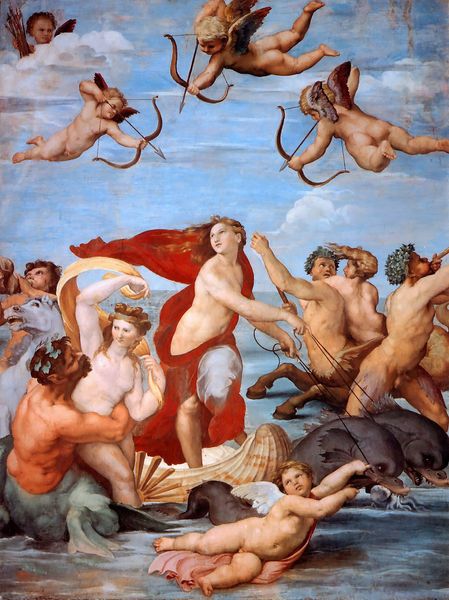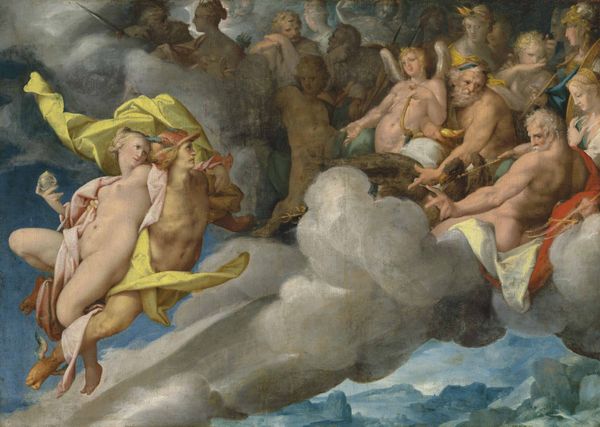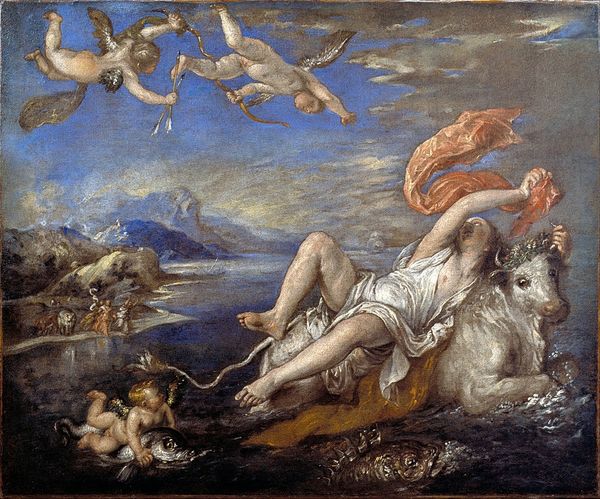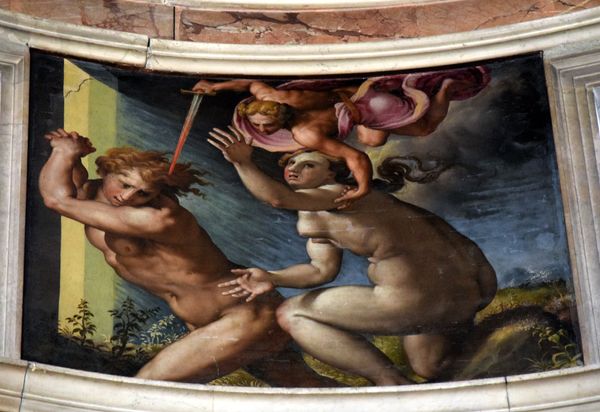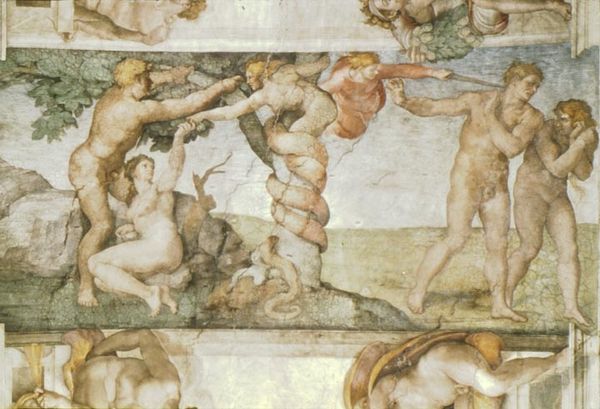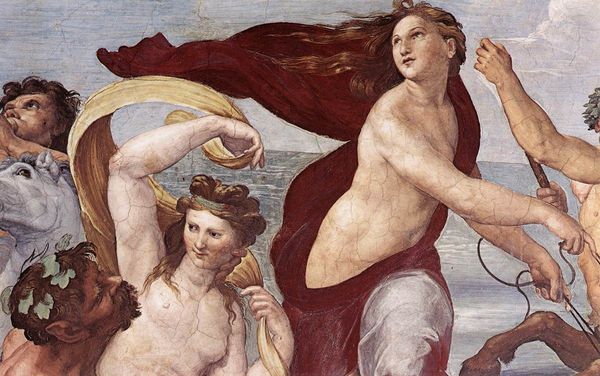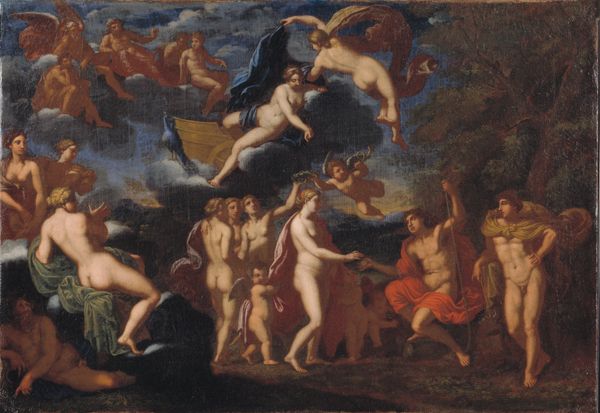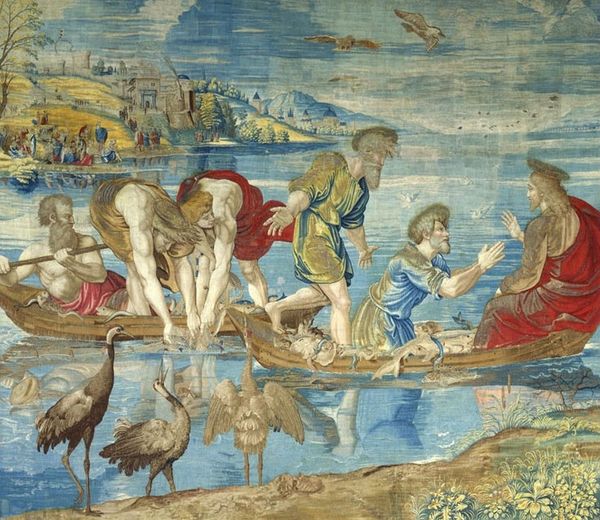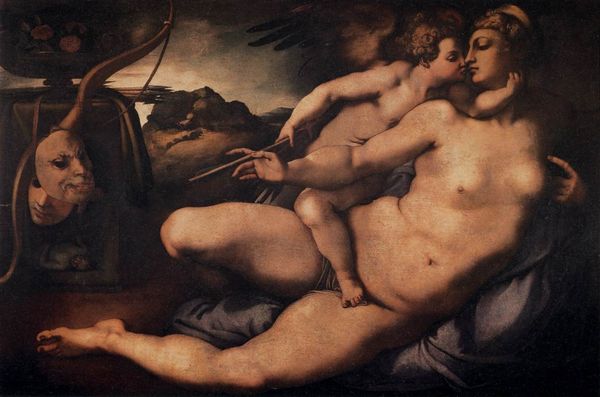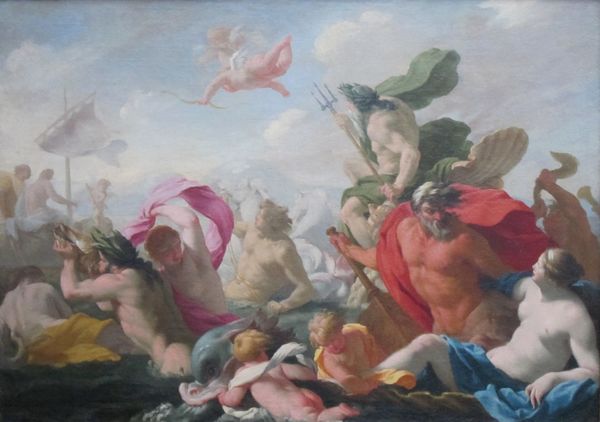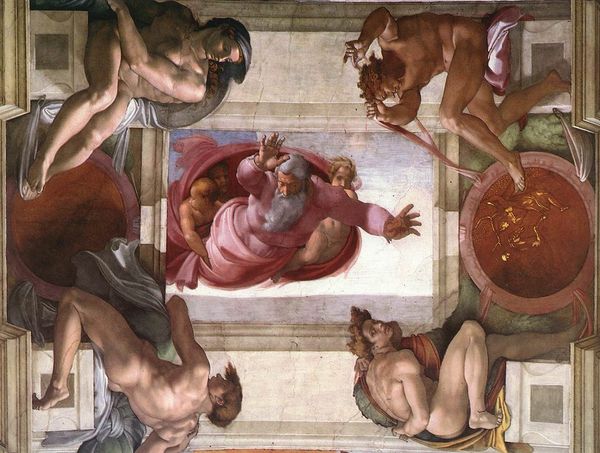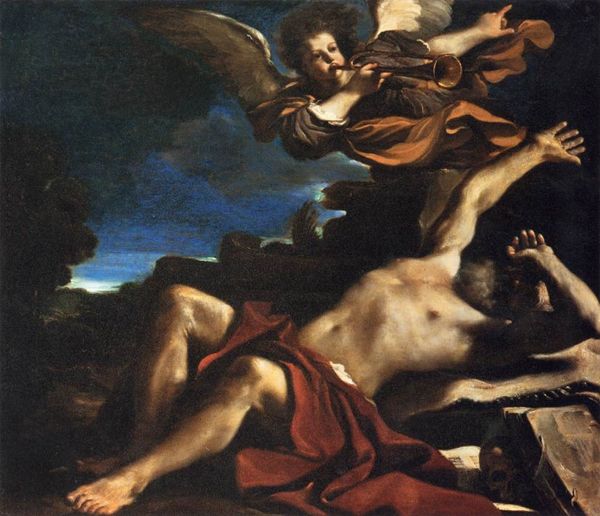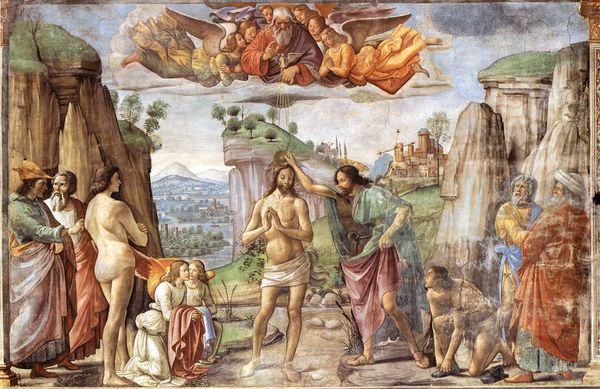
oil-paint, fresco
#
oil-paint
#
figuration
#
fresco
#
oil painting
#
mythology
#
history-painting
#
italian-renaissance
Dimensions: 300 x 220 cm
Copyright: Public domain
Curator: We're looking at a section of Raphael's "The Triumph of Galatea," painted as a fresco in 1514. It resides at the Villa Farnesina, Rome. Editor: It's surprisingly bright. Given its age, I anticipated more somber tones. There's a lightness and joy that permeates the whole composition. Curator: Indeed, Raphael achieves this buoyancy through his masterful use of color. Notice the vibrant blues of the sky and the soft pinks and peaches of the cherubs. The figures are arranged in a dynamic, spiraling composition, creating a sense of movement and energy, typical of the High Renaissance aesthetic. The use of implied lines draws the eye upwards. Editor: Beyond the aesthetics, this work depicts a pagan myth, placing Galatea at the heart of a celebratory scene. Given that this artwork exists inside a wealthy Roman home and considering the power dynamics between men and women during the Italian Renaissance, do we not have to examine the portrayal of Galatea from a feminist viewpoint? What power did she have within these visual constructs, how complicit was she in it, and how did wealthy Romans identify with it? Curator: A valuable point to ponder. While we analyze those themes, the piece remains exceptional when considering the grace and balance evident in every figure and element of composition. Raphael expertly uses contrapposto in Galatea’s stance to showcase classical ideals of beauty and harmony. Editor: It reminds me how we tend to isolate so-called masterpieces, like "The Triumph of Galatea," as individual works when they really emerge from and reinforce specific historical conditions and cultural ideologies. These commissions sustained Raphael. Should not such an exchange merit reflection too? Curator: Your perspective provides a contemporary viewpoint through which to contextualize these visual elements within society and politics of its time. Editor: I only suggest we do more than visually dissect this. Art demands discourse about power as much as line. Curator: Absolutely. Considering these critical views broadens our perception beyond the piece, into how these beautiful creations become entrenched with a deeper historical significance.
Comments
No comments
Be the first to comment and join the conversation on the ultimate creative platform.
